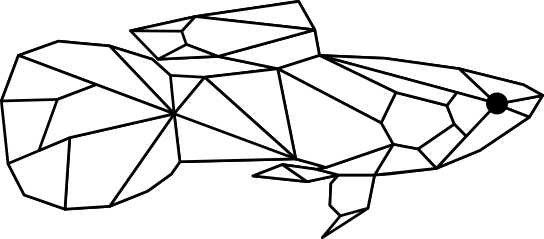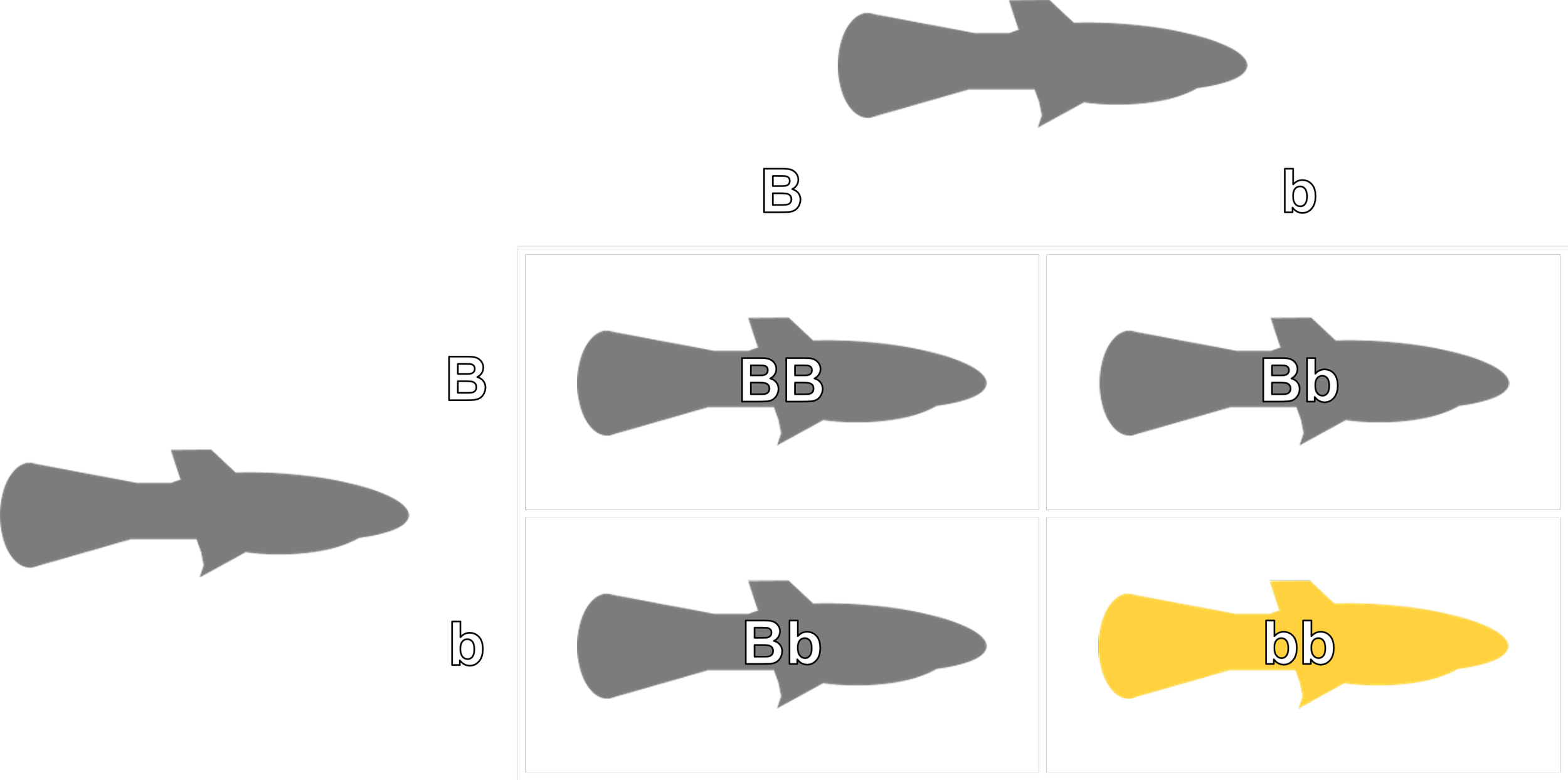
Note: Much of the information presented here is based on the work of Alan S. Bias and Carl Groenewegen, as published in their Poecilia reticulata: Domestic Breeder Trait Matrix Reference Guide.
The blond gene (b) is one of the most identifiable genes that determines a guppy's base body color. While there are other base body types like albino, golden, and cream, this project focuses exclusively on blond, as it's the relevant gene for my breeding. It's important to note, however, that albino and golden genes interact with gray (wildtype) in the exact same manner as blond.
Blond is an autosomal recessive gene. When a guppy expresses the blond phenotype, the size and structure of its melanophores are significantly reduced, while the number of these pigment cells remains relatively unchanged. This gives the guppy's scales a visually brighter, more yellowish appearance compared to the darker, wildtype gray guppy.
BB or Bb
bb
The outcomes of breeding gray and blond guppies are very predictable, as their inheritance patterns follow simple Mendelian genetics. This gene is autosomal, meaning it is not located on the sex chromosomes, so the sex of the parents does not affect the outcome.
The six most common breeding combinations between homozygous, heterozygous, gray, or blond guppies are detailed below. The Punnett squares provided show the statistical probability of each offspring's genotype. For this single-gene cross, a simple 2x2 Punnett square is used, with each quadrant representing a 25% probability for a given genotype.
Combination: 1
Combination: 2
Combination: 3
Combination: 4
Combination: 5
Combination: 6








